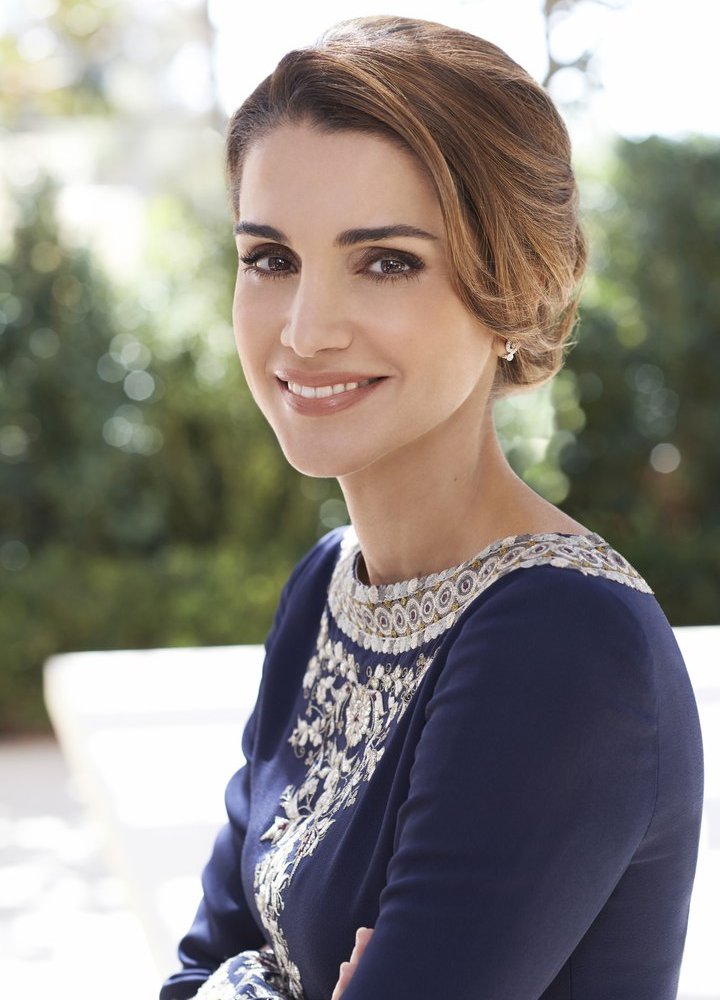Queen Of Jordan: A Symbol Of Strength And Modernity
The Queen of Jordan is a figure that embodies grace, strength, and a commitment to humanitarian efforts. As the wife of King Abdullah II, she plays a vital role in shaping not only the royal family’s image but also the future of Jordan. Throughout her tenure, she has become a beacon of hope and empowerment for women and children in Jordan and the Arab world.
In this article, we will explore the life and contributions of the Queen of Jordan, covering her early life, marriage to the king, her philanthropic efforts, and her role in promoting education and social reform. We will also delve into her public persona and how she has navigated the challenges of being a modern queen in a traditional society.
Join us as we take a closer look at the Queen of Jordan, her achievements, and the impact she has made both locally and internationally. This comprehensive exploration will provide insights into her life, her work, and her vision for the future of Jordan.
Table of Contents
- Biography of the Queen of Jordan
- Early Life and Education
- Marriage to King Abdullah II
- Philanthropic Efforts
- Promotion of Education
- Advocacy for Social Reform
- Public Image and Persona
- Conclusion
Biography of the Queen of Jordan
Queen Rania of Jordan, born Rania Al-Yassin on August 31, 1970, in Kuwait, is known for her elegance, intelligence, and dedication to her country. She is the daughter of Palestinian parents who immigrated to Kuwait, and she spent her childhood there before moving to Jordan after the Gulf War.
| Full Name | Rania Al-Yassin |
|---|---|
| Date of Birth | August 31, 1970 |
| Place of Birth | Kuwait |
| Nationality | Jordanian |
| Spouse | King Abdullah II |
| Children | Four |
Early Life and Education
Queen Rania attended the New English School in Kuwait before moving to the United States for higher education. She graduated from the American University in Cairo with a degree in Business Administration. After completing her studies, she worked in the banking and technology sectors in Jordan.
Marriage to King Abdullah II
In 1993, Rania married Prince Abdullah, who later became King Abdullah II in 1999. Their union was marked by a shared commitment to modernizing Jordan and improving the lives of its citizens. Together, they have four children: Crown Prince Hussein, Princess Iman, Princess Salma, and Prince Hashem.
Philanthropic Efforts
As Queen, Rania has been actively involved in numerous philanthropic initiatives. She founded the Jordan River Foundation in 1995, which focuses on community development and the welfare of children and women. The foundation has implemented various programs aimed at empowering vulnerable groups and improving their living conditions.
- Community Development Programs
- Child Protection Initiatives
- Women's Empowerment Projects
- Disaster Relief Efforts
Promotion of Education
Education is one of Queen Rania’s primary focuses. She has been a vocal advocate for educational reform in Jordan, believing that a well-educated populace is essential for the country's future. Through her initiatives, she has promoted access to quality education, particularly for girls and marginalized communities.
Key Initiatives in Education
Some notable initiatives include:
- Establishing schools in rural areas
- Promoting digital literacy among youth
- Supporting teachers' training programs
- Encouraging STEM education for girls
Advocacy for Social Reform
Queen Rania has been a strong advocate for social reform in Jordan, focusing on issues such as gender equality, youth empowerment, and health care. She uses her platform to raise awareness about the challenges faced by women and children, pushing for legislative changes that promote their rights.
Impact of Social Reform Initiatives
Her efforts have led to significant improvements in various sectors, including:
- Increased representation of women in politics
- Enhanced healthcare services for families
- Greater awareness of domestic violence issues
Public Image and Persona
Queen Rania is known for her modern and relatable public image. She effectively uses social media to connect with the youth and promote her initiatives. Her fashion sense and poise have made her a style icon, while her humanitarian efforts have earned her respect both in Jordan and internationally.
Media Presence
Her presence in the media has been instrumental in shaping public perception. Queen Rania often appears at international forums, advocating for global issues such as education and women's rights, further solidifying her role as a modern monarch.
Conclusion
In summary, the Queen of Jordan is a remarkable figure whose contributions to her country and the world are invaluable. Through her philanthropic efforts and advocacy for education and social reform, she has made a significant impact on the lives of many. Her commitment to empowering women and children sets a powerful example for future generations.
We encourage you to share your thoughts in the comments section below or explore more articles on our site related to influential figures and social reform. Stay connected and informed!
Final Thoughts
Thank you for reading! We hope this article has provided you with valuable insights into the life and work of the Queen of Jordan. We look forward to welcoming you back for more informative and engaging content.
What Actor Played In The Haunted House? Unveiling The Stars Behind The Spooky Scenes
Griselda Blanco Joven: The Rise Of The Cocaine Godmother
James Kent: The Legacy Of A Culinary Genius And The Impact Of His Untimely Death


